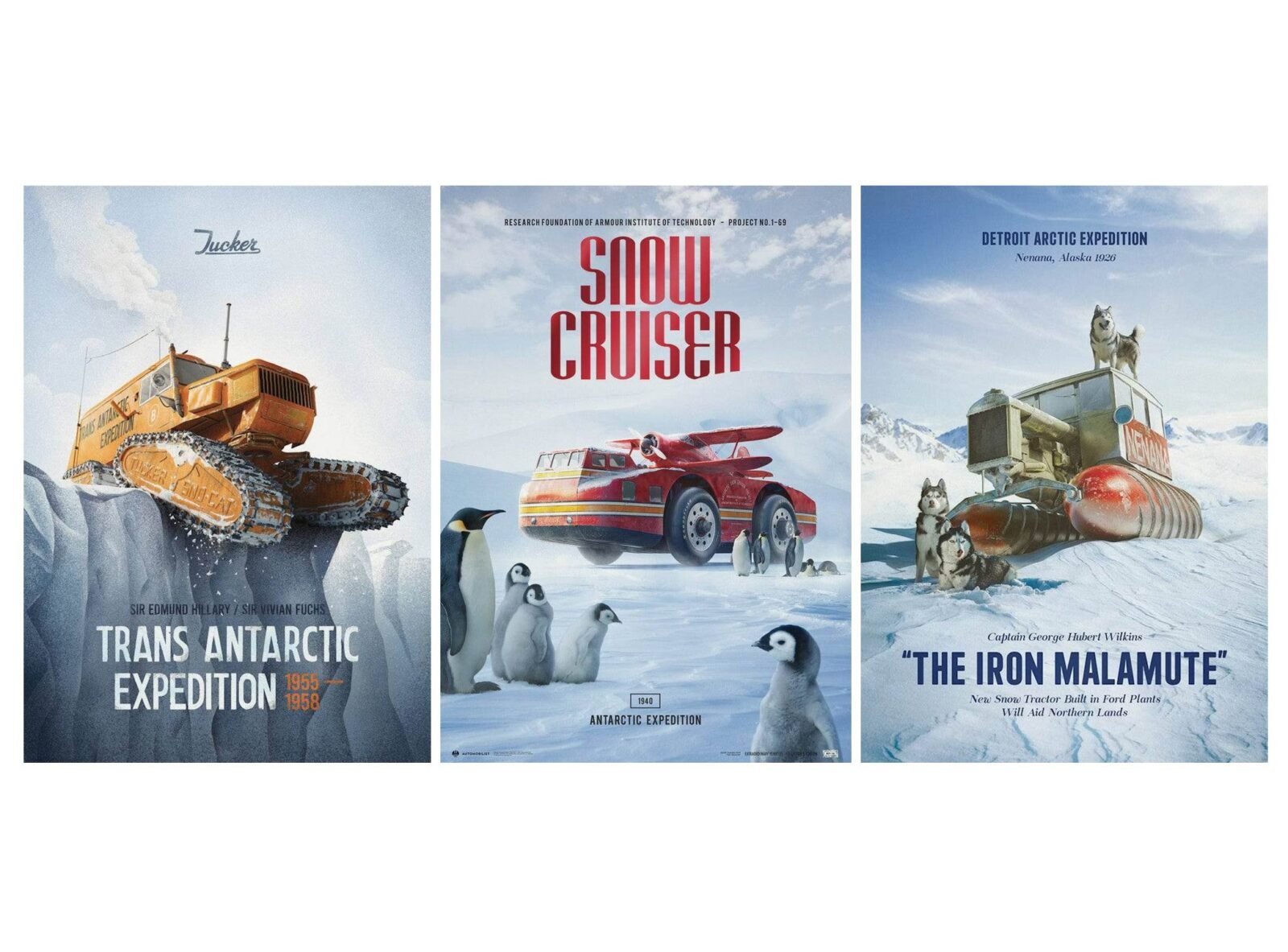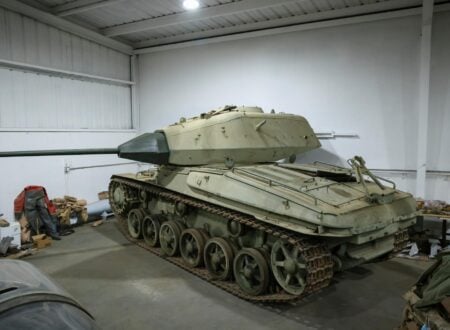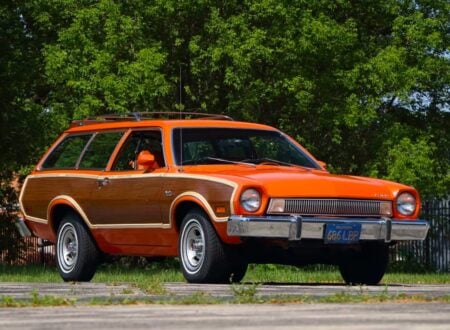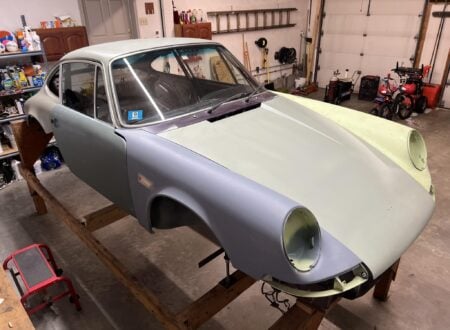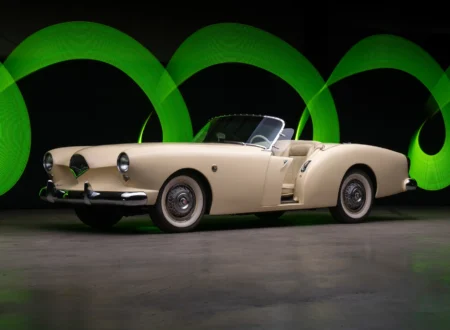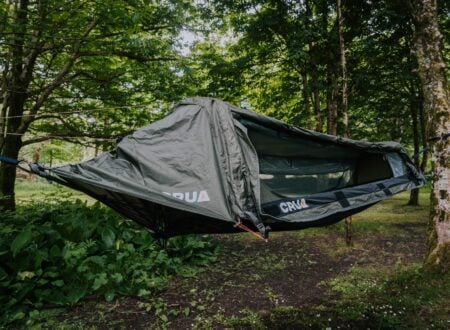This is the new Extraordinary Vehicle print series from the team at Automobilist, it includes four individual works – all of which are genuine polar exploration vehicles that were built and used in some of the planet’s most extreme environments.
Automobilist is a little different to other art houses in that they actually recreate historic vehicles using 3D modeling software right down to the individual rivets and scratches in the paintwork. This allows them to produce stunning recreations of historic vehicles, races, and related scenes.
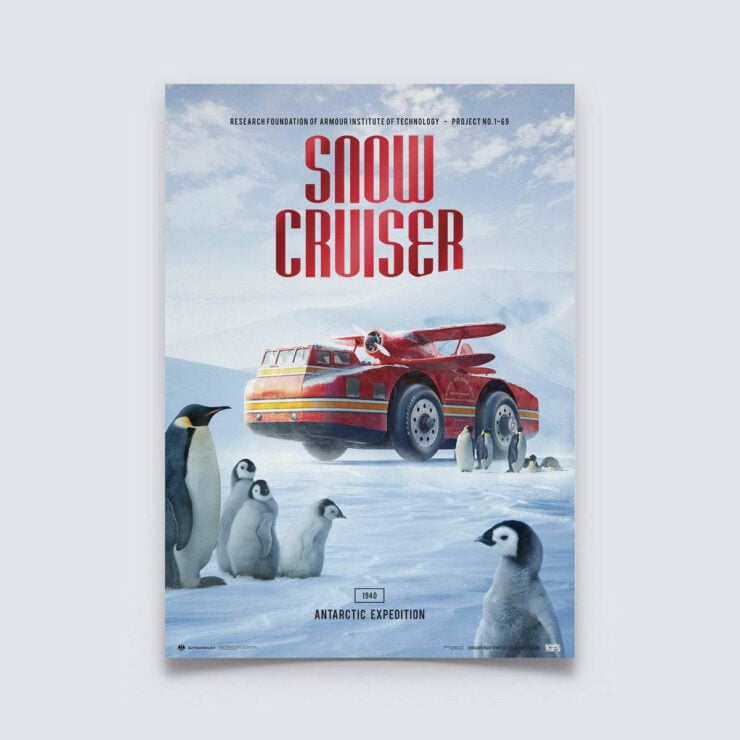

The Antarctic Snow Cruiser
The Antarctic Snow Cruiser was designed and built in the late 1930s for the United States Antarctic Service Expedition. It was a pioneering vehicle intended for the scientific exploration of Antarctica.
The Snow Cruiser was gargantuan at 55 feet long, it weighed close to 37,000 pounds, and it featured a slew of Antarctic-specific design elements like smooth, large balloon tires and an internal cabin that contained all of the crew’s living quarters, and a machine shop for repairs on the go.
Upon its deployment in Antarctica, the Cruiser encountered significant challenges almost immediately. The smooth tires lacked traction on the icy terrain, and mechanical issues compounded its difficulties, ultimately hindering its intended use as a mobile research lab. The Snow Cruiser remains a notable example of ambitious engineering, albeit one that ended in colossal failure.
Each of these prints is strictly limited to 100 numbered pieces, they’re high-quality offset prints on premium heavyweight 175 g/m2 paper and they measure in at 50cm x 70cm or 19.75 inches x 27.5 inches.
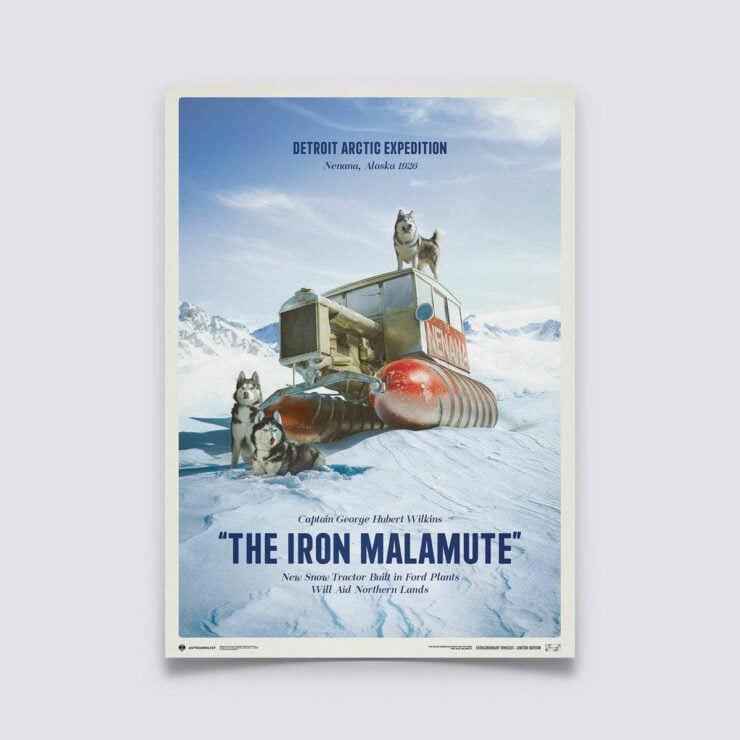

The Fordson “Iron Malamute” Snow Tractor
The Fordson “Iron Malamute” Snow Tractor was a modified version of the popular Fordson agricultural tractor, adapted for polar exploration in the early 20th century. These tractors, originally designed by Henry Ford and his son, were renowned for their reliability and affordability – much like the Model T Ford that had come before.
For polar expeditions, they were equipped with special rotating cylinders that helped it to “float” across deep snow, and they were given an enclosed cab to protect the driver from the harsh cold.
Nicknamed the “Iron Malamute,” after the robust Alaskan Malamute sled dogs, these tractors served as practical, utilitarian vehicles for hauling supplies and supporting scientific research in polar regions. Ultimately they proved less capable than their four-legged namesake, and would become an evolutionary dead end in the race to develop effective Arctic and Antarctic transportation.
Each of these prints is strictly limited to 100 numbered pieces, they’re high-quality offset prints on premium heavyweight 175 g/m2 paper and they measure in at 50cm x 70cm or 19.75 inches x 27.5 inches.
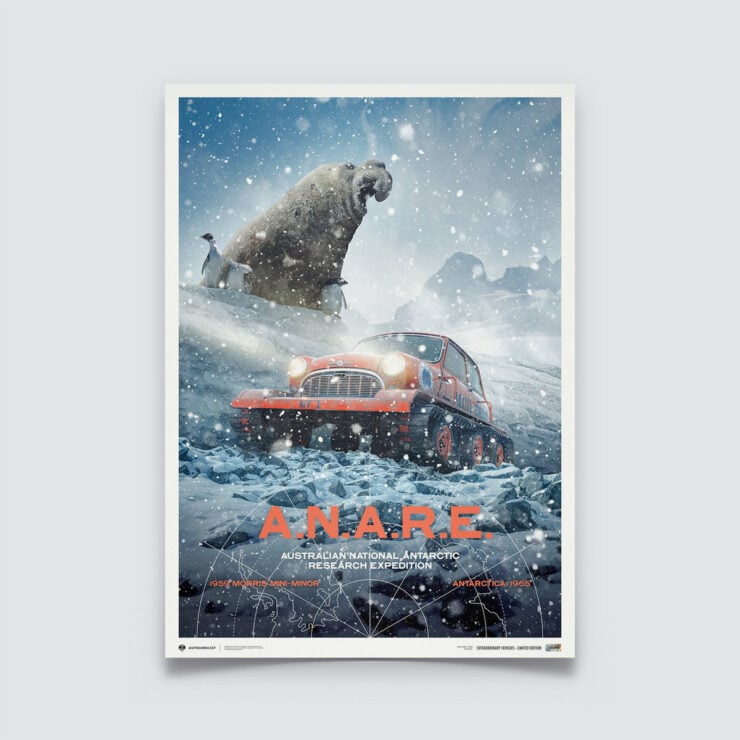

The A.N.A.R.E. Mini-Trac
The Mini-Trac was developed by an Australian mechanic named Terry O’Hare in 1965. The Mini had already proven its worth in both rally and tarmac racing by this time, frequently besting far larger and more powerful cars to claim a slew of wins.
O’Hare believed that the Mini could also be a winner in Antarctica due to its small size and low weight, it just needed tracks to be able to travel over snow. He developed a track system that utilized the car’s pre-exiting front wheel drive system and it worked remarkably well for the A.N.A.R.E. (Australian National Antarctic Research Expeditions) based in Wilkes Station.
Each of these prints is strictly limited to 100 numbered pieces, they’re high-quality offset prints on premium heavyweight 175 g/m2 paper and they measure in at 50cm x 70cm or 19.75 inches x 27.5 inches.
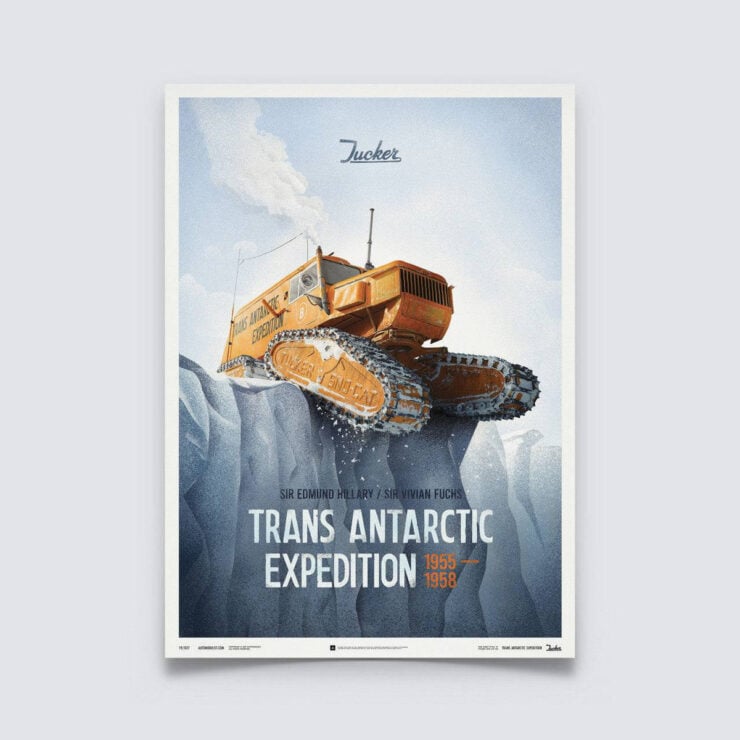

The Trans Antarctic Expedition Tucker Sno-Cat
The Trans-Antarctic Expedition (1955 to 1958), led by Sir Vivian Fuchs and Sir Edmund Hillary, marked a major milestone in polar exploration – achieving the first overland crossing of Antarctica. Central to the success of the expedition were their four Tucker Sno-Cats, unique polar vehicles developed by Emmitt Tucker specifically for navigating deep snow and ice.
The Sno-Cats, with their four wide and independently operable tracks, were vital for transporting supplies, navigating otherwise impassable terrain, and supporting the team through some of the most extreme conditions anywhere on Earth. Despite challenges like severe cold, 100+ mph winds, and blizzards, the expedition triumphed, completing the 2,000 mile journey across the continent in March of 1958.
Three of the four Tucker Sno-Cats have survived, one is on display in the Canterbury Museum in Christchurch, New Zealand, another is on display at the Antique Gas and Steam Engine Museum in Vista, California, United States, and the third is in the Science Museum at Wroughton, England.
Interestingly, the fourth Tucker Sno-Cat is generally believed to still be in Antartica, most likely close to Shackleton Base though it would be buried under decades worth of snow and ice, and may never be found.
Each of these prints is strictly limited to 100 numbered pieces, they’re high-quality offset prints on premium heavyweight 175 g/m2 paper and they measure in at 50cm x 70cm or 19.75 inches x 27.5 inches.
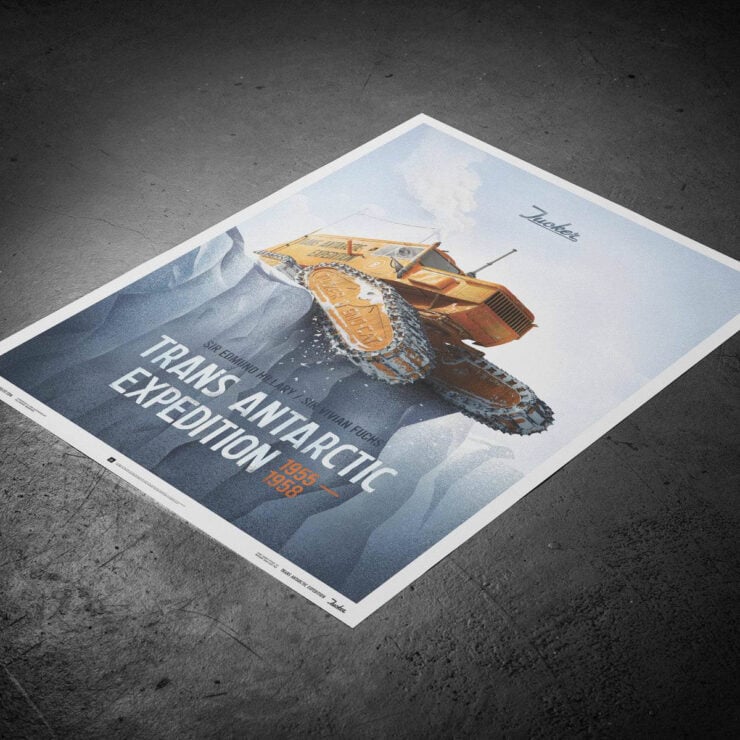
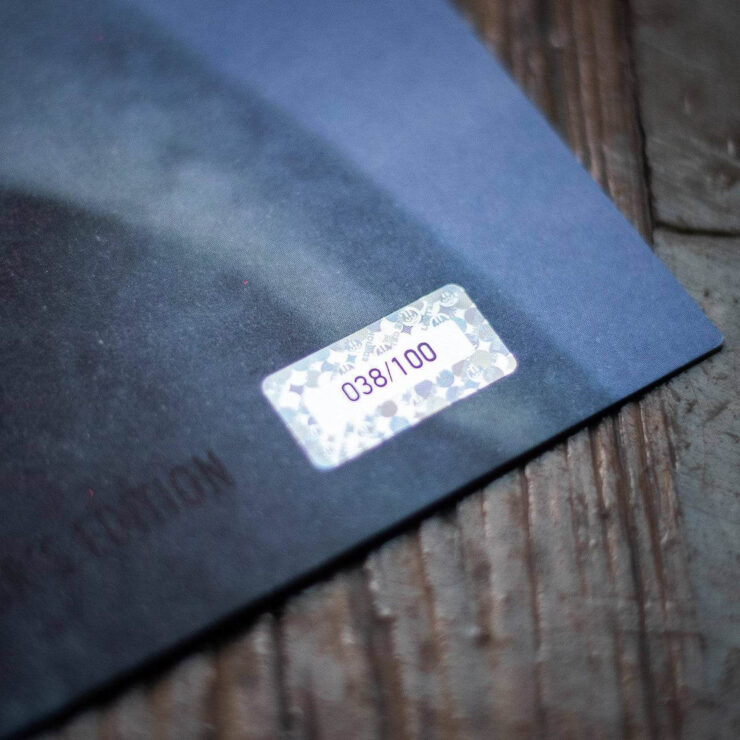
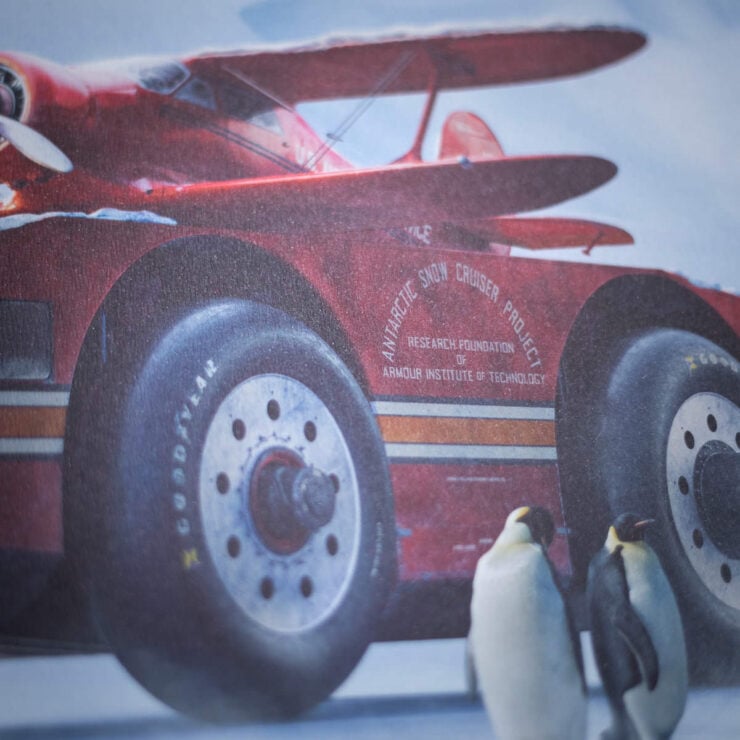
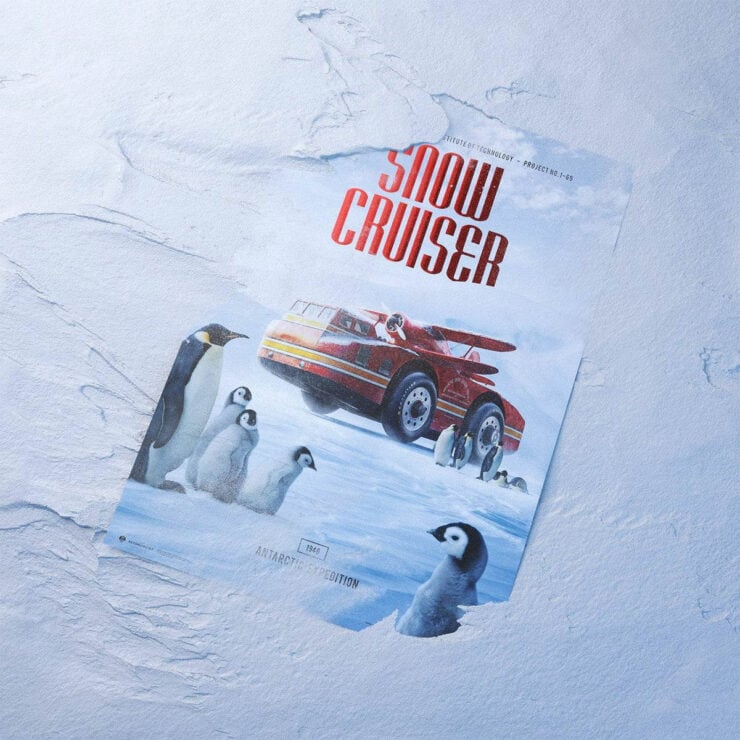

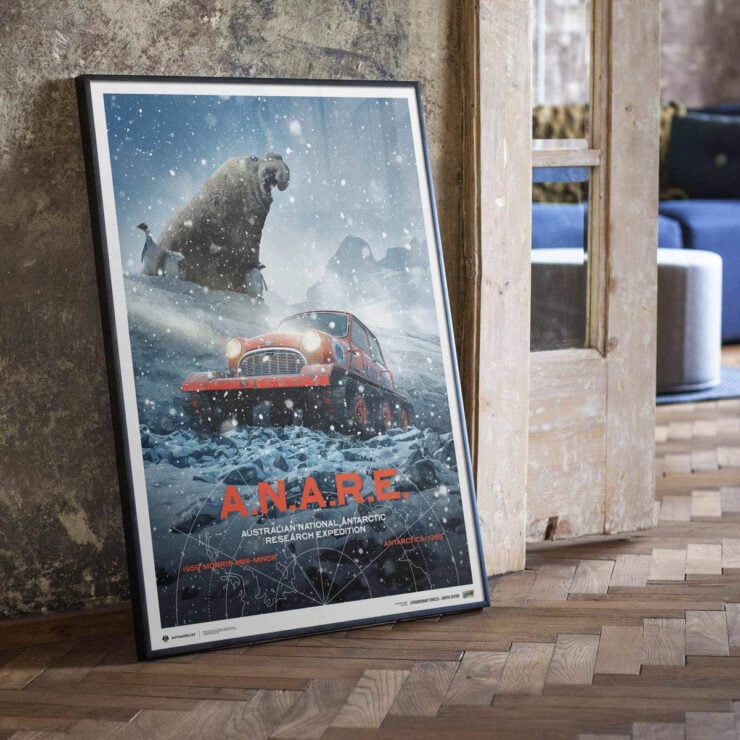
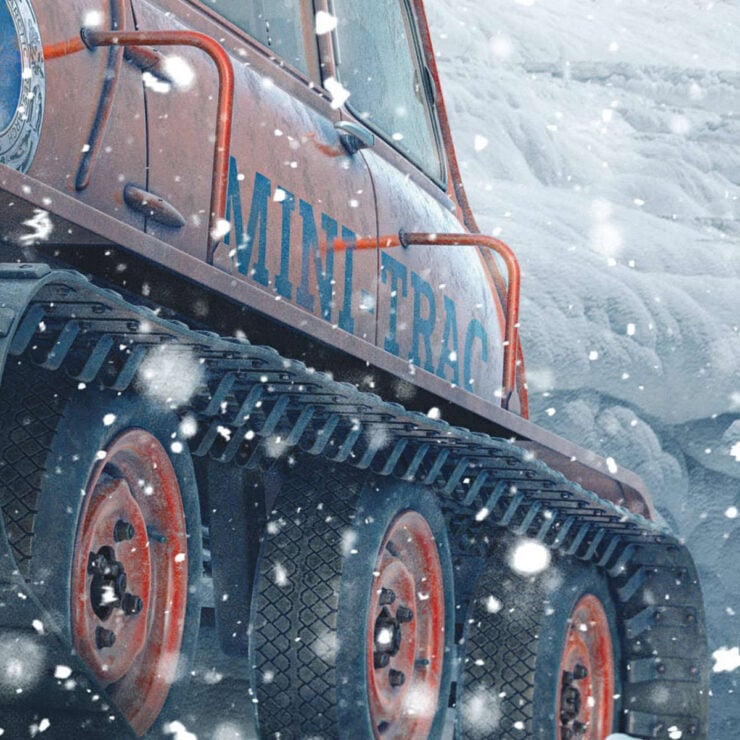
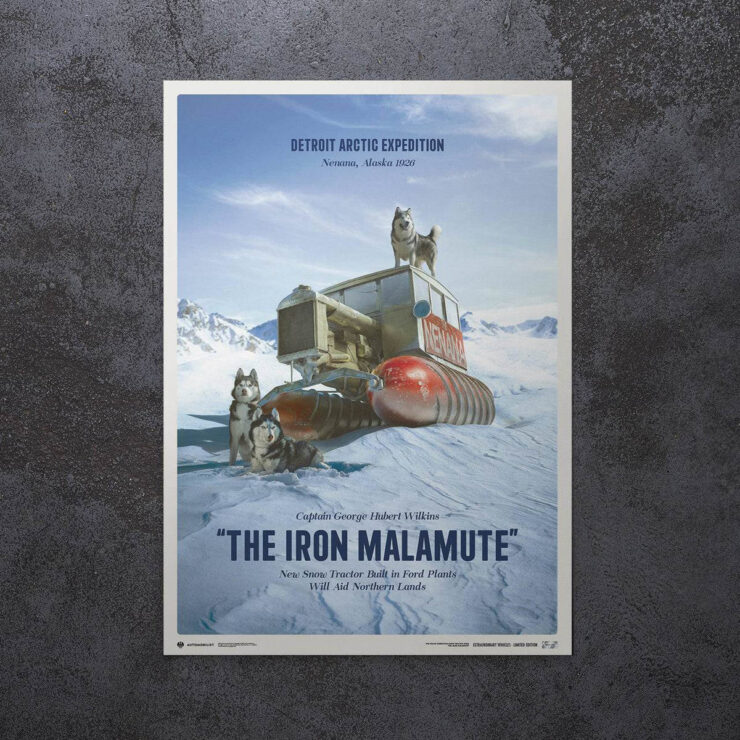
All images courtesy of Automobilist

